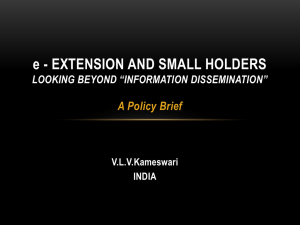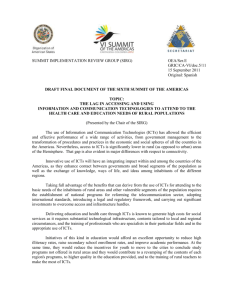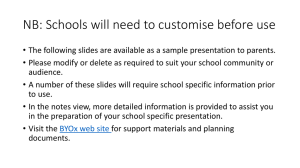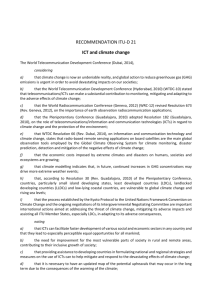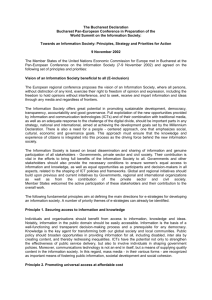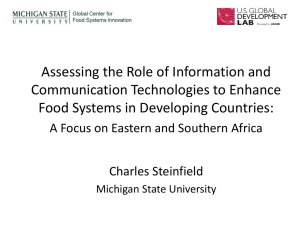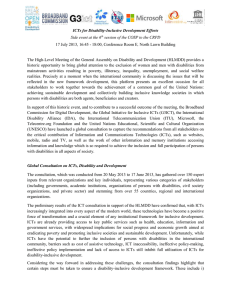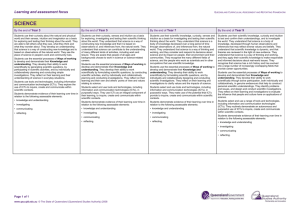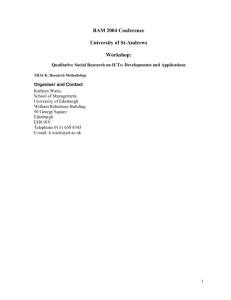ICTs for Agricultural Extension
advertisement
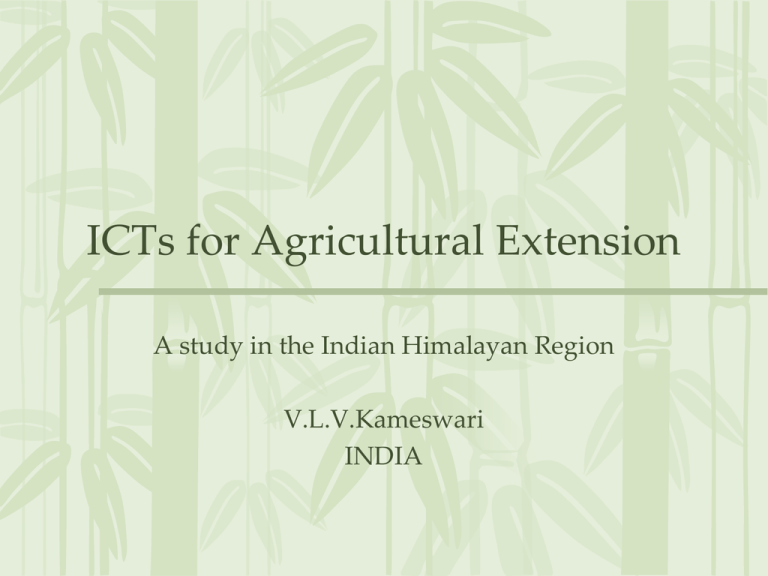
ICTs for Agricultural Extension A study in the Indian Himalayan Region V.L.V.Kameswari INDIA Introduction • Increase in agricultural production is constrained by limited land and water availability. • Further growth can be achieved only through increase in yield. • Serious gaps exist in transfer of technology. • This gap can be bridged by an effective extension system. Extension system in India Public extension system Mass media Interpersonal contact Limitations of extension system • Decreasing fund allocation. • Limited capacities of extension staff. • Large number of farm families. • Poor reach to marginal and small farmers. • Low literacy rate among farming community. E-extension Use of ICTs has been put forth for: • Bridging the knowledge deficit among farmers • Enhancing the capabilities of extension personnel, and • Strengthening the research-extensionfarmer linkages. Objective To examine their relevance to the farming community and explore ways of integrating ICTs with the existing public extension service to overcome these challenges. Study area • Study was conducted in the state of Uttarakhand • Falls in the Indian Himalayan region. • Eight villages from four hill districts were selected for the study. Study area Study Area Study Area Study Area Methodology • Pilot study: Finalize the tool. • Phase I: Villages were selected randomly in Garhwal division. • Phase II: Only those villages which were agriculturally “productive” were chosen. Additional criteria (distance from market and availability of transportation) were taken into consideration. Findings- Landholding pattern 90 80 70 60 50 40 30 20 10 0 Landless Marginal Small Medium Large Findings- Occupational pattern 90 82 80 70 60 50 40 30 20 18 10 Agriculture Ag.+ other 0 Agriculture Ag.+ other Findings-Media Ownership 90 Mobile phone 80 Television 70 60 50 40 30 20 10 Internet 0 Radio Newspaper Fixed phone Findings-Media Ownership 100 90 80 70 60 50 40 30 Radio Television Newspaper Internet Landline Mobile phones 20 10 0 1 2 3 4 5 6 7 8 Findings-Source of agricultural information Rank Source I Middlemen/ input dealers II Government agencies III Interpersonal networks Findings-Source credibility Rank Source I Government agencies II Interpersonal networks III Middlemen/ input dealers Findings-Media usage for farm information 60 Mobile phone 50 40 Television 30 20 10 Internet 0 Radio Newspaper Landline Findings Conclusions • Information deficit does not necessarily lead to information seeking behaviour. • It depends on the value information can add to that enterprise. • In the absence of other factors, farmers are not able to leverage new/ additional information and transform it into tangible benefits (increased income or enhanced productivity). Objectives • • • • • To document the communication behaviour of the farming community with specific reference to ICTs in the study area. To enlist the constraints surrounding the use of ICTs for agriculture by farming community. To study the relationship between economic and sociocultural characteristics of farmers and constraints faced in the use of ICTs for agriculture. To study the relationship between different types of ICTs and constraints faced by the farmers. To develop an ICT based integrated Agricultural Knowledge Information System for the study area.
